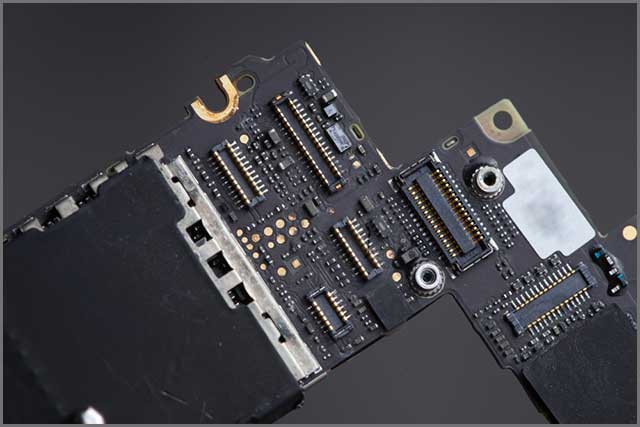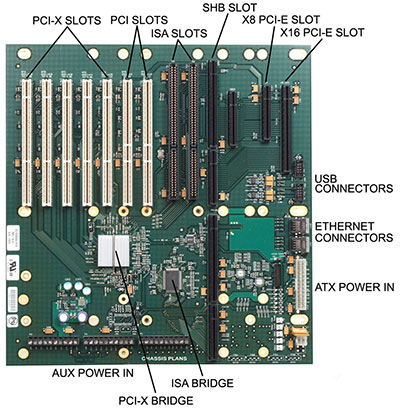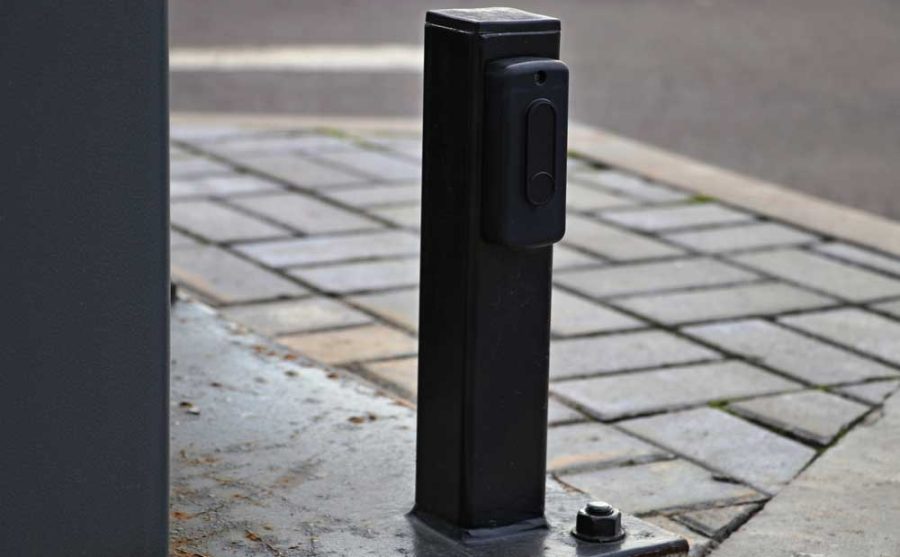Printed circuit boards, also known as circuit board manufacturers, make up some of the critical components of electronic devices. A majority of people use them daily without even thinking about them, and they are vital to a wide variety of industries. PCBs have a wide number of applications, but here, we will highlight 14 of the most common PCB manufacturing uses.
Contents
- What is a Printed Circuit Board?
- 14 PCB Application Areas
- 1、 LEDs
- 2、Consumer Electronics
- 3、Medical Appliances
- 4、Industrial Appliances
- 5、Automotive Components
- 6、Military and Defense Appliances
- 7、Telecommunications Appliances
- 8、Safety and Security Appliances
- 9、Maritime Applications
- 10、Aerospace Components
- 11、Renewable Energy Systems
- 12、PCB in Robotics
- 13、Internet of Things (IoT) Devices
- 14、Wearable Technology
- Uses of PCB Based on PCB Types
- One-layer PCBs/Single-sided PCBs
- 2-layer PCBs/Double-sided PCBs
- Multi-layer PCBs
- Rigid PCBs
- Flexible PCBs
- Rigid-Flex PCBs
- Conclusion
What is a Printed Circuit Board?
Before covering the use of printed circuit boards, it would be essential to understand what a PCB is. Printed circuit boards (PCBs) are boards that play the role of connecting electronic components or appliances. They play a vital part in nearly all electronic devices that individuals use daily.
PCBs are manufactured using non-conductive materials. Moreover, consist of pads, lines, and other features etched from copper sheets to connect the entire electronic components found within a product electronically.
Unlike before, where PCBs' use wasn’t widespread, such is not the case as of today. Today, the use of printed circuit boards in electronic devices is extensive, and there are several types of PCBs. Some are single-sided, while others are double-sided or even multilayered. PCBs can be flexible, rigid, or contain both flexible and rigid parts.
But what are the most common uses of PCBs? Since there are plenty of sectors that use PCBs, chances of finding them almost everywhere, from huge pieces of machinery to small consumer devices, are high. Here is a list of 10 most common applications of printed circuit boards by industry.
Special Offer: Get $100 off your order!
Email [email protected] to get started!
14 PCB Application Areas
1、 LEDs
Also known as light-emitting diodes, LEDs are becoming an accessible lighting technology used for commercial and residential commercial lighting. Their usage is common across several industries such as the automotive field, computer, and medical sectors. LEDs are an excellent choice for being energy efficient, longer life, and compact.
A significant role that PCBs play in LED applications is by transferring heat away from the bulb. PCBs are used for LEDs compose of aluminum that is known for transferring heat, unlike other metals. LED PCBs are prevalent in storefront lighting, residential lighting, medical lighting, computer, and automotive displays.
 Image 1: An image of an LED PCB
Image 1: An image of an LED PCB
2、Consumer Electronics
Computers, smartphones, and plenty of other consumer products daily need PCBs to function correctly. As electronics get added to products that people use, PCBs also become a more significant part of people’s lives. A wide range of consumer products that rely on PCBs to function include computers, home appliances such as coffee makers and microwaves, and communication devices such as tablets and smart-watches.
Scrutinized, the use of PCBs in consumer products shows no sign of slowing down anytime soon, with statistics indicating that many people are owners of electronic devices.
3、Medical Appliances
The healthcare sector uses PCBs with advancing technologies that continue to reveal new capabilities. Printed circuit boards play an active role in devices across the medical field. For instance, equipment used for monitoring, diagnostics, treatment, and more rely on PCBs. PCBs are used in medical devices such as medical imaging systems, monitors, and infusion pumps, to mention but a few.
The medical sector is said to be continually finding a lot of uses for electronic devices. As technology continues to improve, smaller, reliable, and denser boards are becoming a possibility. Today, PCBs play an increasingly vital role across the healthcare sector.
4、Industrial Appliances
The printed circuit board uses across the industrial field vary widely. Electronic appliances power a huge part of equipment in distribution and manufacturing centers. Printed circuit boards used across the industrial sector need to be resistant to extreme temperatures, vibrations, and rough handling. To meet this need, PCBs used here are manufactured using durable metal or some thermal-resistant materials.
Apt examples of industrial applications for printed circuit boards include measuring equipment that measures and control temperature and pressure. Others include power equipment such as DC-to-AC power inverters and manufacturing equipment used in the manufacturing process. With robotics, industrial Internet of Things, and other technologies becoming more common, new uses for printed circuit boards are arising across the industrial sector.
 Image 2: An image of an industrial employee working on a PCB
Image 2: An image of an industrial employee working on a PCB
5、Automotive Components
Manufacturers of automotive components use a considerable number of electronic
devices in their cars. In earlier times, printed circuit boards were standard in things such as headlight switches and windshield wipers. But looking at the current trends, they enable a majority of advanced features to make driving more comfortable and safer.
Today, you can find PCBs in automotive components such as sensors, control systems, navigation, and entertainment systems. Most systems that control some of the basic functions of a vehicle rely on electronic components powered by the PCB.
 Image 3: An illustration of a smart vehicle interface.
Image 3: An illustration of a smart vehicle interface.
6、Military and Defense Appliances
The military used printed circuit boards for a wide range of applications such as computers, communications equipment, firearms, vehicles, and more. PCBs meant for military use have to be durable and exceptionally reliable as they play a vital role in national security. A majority of military equipment relies on PCBs, with most of them finding benefits from their use.
Examples of PCBs' defense and military uses include communications equipment such as a radio communication system and control systems. PCBs are also used in instrumentation that enables indicators to monitor threats or operate the equipment.
7、Telecommunications Appliances
Printed circuit boards are very critical in the telecommunications sector. They are vital for consumer appliances such as tablets and smartphones since they are the infrastructure that enables such devices to function as desired. The telecom industry uses a wide variety of printed circuit boards since plenty of equipment relies on them for functionality.
Some examples of telecom equipment that rely on PCBs include telecom towers, office communication equipment, LED displays, and indicators. The telecommunications industry is developing almost every day, and the printed circuit boards used in this sector are constantly evolving. As the generation and transfer of more data become common across this sector, so are PCBs needed here.
 Image 4: A PCB of a smartphone
Image 4: A PCB of a smartphone
8、Safety and Security Appliances
A majority of security systems meant for home or business use heavily rely on printed circuit boards. They play a significant role in people’s safety and security more often than individuals may realize. The ideal type of printed circuit board depends on its application, but those meant for safety and security appliances need to be reliable at all times. Some security appliances are intended for outdoor use and require printed circuit boards to withstand the harsh outdoor environment.
Some safety and security appliances that use printed circuit boards include electronic door locks, smoke detectors, and security cameras. All of these and many more rely on printed circuit boards for functionality. PCBs continue to play an essential role in a wide variety of security and safety equipment, especially with such products continuing to gain popularity in many places worldwide.
9、Maritime Applications
Close to all marine vessels and systems depend on printed circuit boards to function as desired. This includes enormous cargo ships, small vessels, communications systems, submarines, and navigation equipment. However, PCBs meant for maritime use have to be able to withstand harsh conditions.
Manufacturers of PCBs meant for maritime use heavily emphasize reliability since such is vital for crew safety and other passengers on board. Some examples of maritime applications where PCBs are plenty of use include navigation systems such as radar systems, communications systems, and control systems. Without printed circuit boards, it would be hard for boats and vessels used here to maneuver appropriately. Maritime applications and other ships require PCBs for practical functionality, and lately, demand for PCBs seems to be high in this sector.
 Image 5: An image of a sea vessel dashboard
Image 5: An image of a sea vessel dashboard
10、Aerospace Components
Electronics used in plenty by aerospace devices have got similar requirements to those used across the automotive sector. However, those meant for aerospace components were mainly exposed to harsh or severe conditions. Across the aerospace sector, printed circuit boards are common in various aerospace equipment such as planes, satellites, space shuttles, and radio communications systems.
Some apt examples of PCB use in the aerospace sector include power supplies, communication equipment, and monitoring equipment. PCBs play a vital role in equipment that powers control towers, aircraft, satellites, and other crucial systems across this sector. All these critical systems would not function as desired if they lacked printed circuit boards.
11、Renewable Energy Systems
The renewable energy boom has led to a demand for PCBs. Among the components in this field are solar inverters, devices responsible for current changes from the solar panel. Moreover, you’ll find PCBs in wind energy systems such as turbines.
In this case, they are useful in controlling the blade pitch.
12、PCB in Robotics
PCBs also form critical components in robots, gaining traction in various industries, such as medicine and production. They perform numerous roles, such as controlling the robot and enabling all its functionalities.
Notably, PCBs used in critical industries such as healthcare need to be top-quality and highly precise.
13、Internet of Things (IoT) Devices
Autonomous devices are in high demand as many people look to move away from the conventionally manual components. At the heart of these smart devices are quality PCBs with the microprocessors responsible for control.
There’s a surge of IoT devices, and this will undoubtedly put more demand for PCBs.
14、Wearable Technology
Again, people are taking activities such as running more seriously, and this requires supporting devices such as smartwatches. Heart rate monitors and fitness trackers are also important for fitness enthusiasts. All these devices rely on PCBs for operation.
There is also a growing demand for these wearable devices as the fitness industry grows rapidly. This will undoubtedly put more pressure on the PCB demand.
Uses of PCB Based on PCB Types
The design of the PCB determines its application and the field in which it can be used. Below are the different designs and their functions.
One-layer PCBs/Single-sided PCBs
They are the most typical PCB type and are simple to make, comprising only one side with the conducting layer. So what makes them so popular? Manufacturing these custom circuit boards is easy, which is why they are easily available.
Despite their simple makeup, they are useful in various applications, including calculators and radio boxes. Also, this is the PCB mostly useful for simple DIY college projects.
2-layer PCBs/Double-sided PCBs
The conducting material on this PCB type is on either side of its surface. It's a great option for a more sophisticated mounting than with single-sided PCBs. Among the areas, you’ll find the PCBs include LED systems and industrial applications.
Multi-layer PCBs
They feature a multitude of layers. They are small in size and with high-density assembly components, making them ideal for installation in devices with space limitations.
Most PCs and devices with sophisticated operation, such as computers, have this type of PCB.
Rigid PCBs
The solid substrate on this PCB is inflexible, so you cannot bend it. Thus, they don’t offer flexibility in use, and you can not even change their form at some point. Notably, this is a more generic classification and may include any of the above three types.
You’ll find this kind of PCB in multiple fields. Their inflexibility only limits bending, and they can remain in a certain shape the whole lifetime. They are very useful in the communication and health areas.
Flexible PCBs
Flexible PCBs differ from the typical rigid PCBs primarily based on their flexibility. You can easily bend/fold them, and this is important, especially when passing them around barriers. Their other remarkable properties include the following:
- Most of the flex PCBs have a thin profile.
- They’re also lightweight and fit for small form factor devices primarily because they bend easily.
- In addition, they require limited materials to manufacture, so their price is low. Replacing them is also cheaper than for rigid PCBs.
- They come in variations of single side, double side, and multiple layers.
So, where are you most likely to see these PCBs? Their applications include medical devices, smartphones, cameras, and calculators. They are also an excellent choice for foldable electronic devices.
Rigid-Flex PCBs
They are a hybrid of rigid and flex PCBs, enabling you to reap the properties of both types. Most of them have a 3D design to fit their applications. Also, they are lightweight because of the flex PCB and their lack of connectors.
Their typical applications include aircraft and medical equipment in manufacturing devices like pacemakers.
Conclusion
The above make up 10 of the most common applications for printed circuit boards. Amazingly, we at OurPCB take our time to ensure that we meet our customer's requirements and specifications for the application of their PCB. But that is not all since there are plenty of other applications that rely on PCBs to function as desired. Any sector that relies on electronic components requires PCBs. PCBs, connect electronic components and aids in the functionality of an electronic device. This is the reason why plenty of sectors, from medicine to the military, rely on them. There seems to be no end in sight regarding the use of PCBs, with their demand expected to increase exponentially in the future. Contact OurPCB today and let us know your desired application!
Special Offer: Get $100 off your order!
Email [email protected] to get started!






